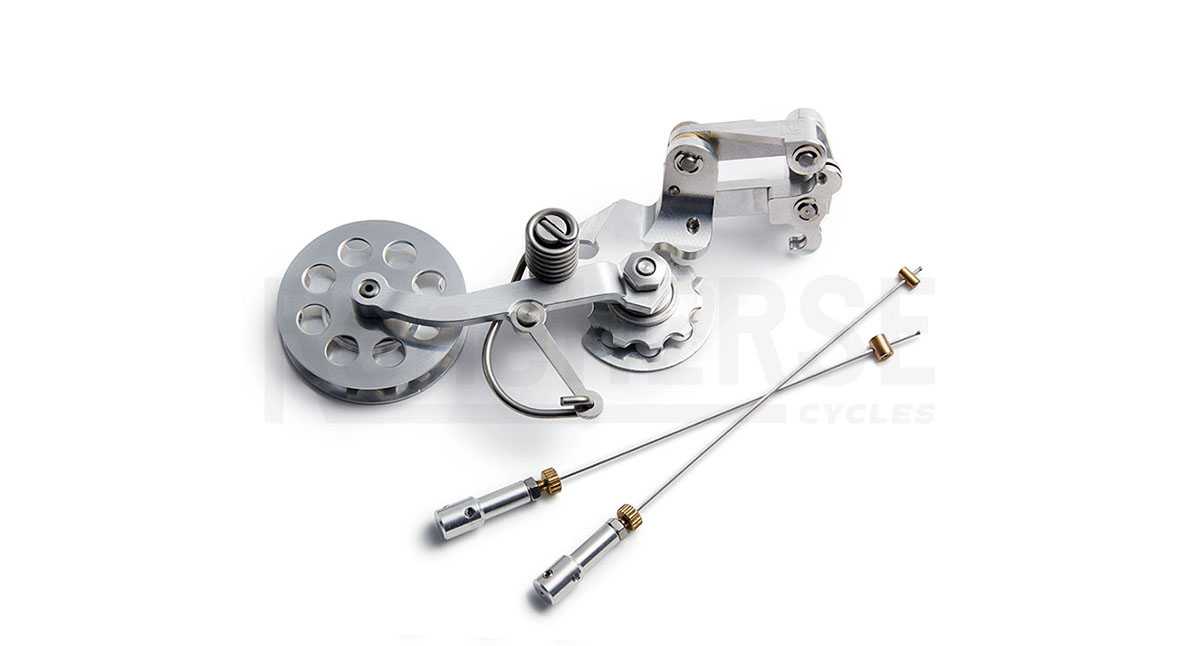Nivex Derailleurs Are Here!
The wait is over! We have Nivex derailleurs, shift levers, cables, dropouts, brazing jigs—the entire program is in stock now. We appreciate all our customers who’ve waited patiently while we finalized this innovative drivetrain. At a time when electronic shifting works extremely well, developing an alternative only makes sense if it offers something different, but still works as well or better than the best available today.
We don’t want to recreate a classic 1980s SunTour derailleur that you can find for $ 50 on eBay… Those old derailleurs still work great today and are very affordable, but it’s also no secret that shifting technology has moved forward by leaps and bounds since then. And yet, something also has been lost as shifting has become a push-button operation. We feel that cycling is about the connection between bike and rider, and we really wanted an analog shifting system where you actually feel the gears engage as you move the lever. Think of it as akin to a manual transmission in a car, a vinyl record or a mechanical watch. Not better, but different—and very appealing to those who appreciate it.
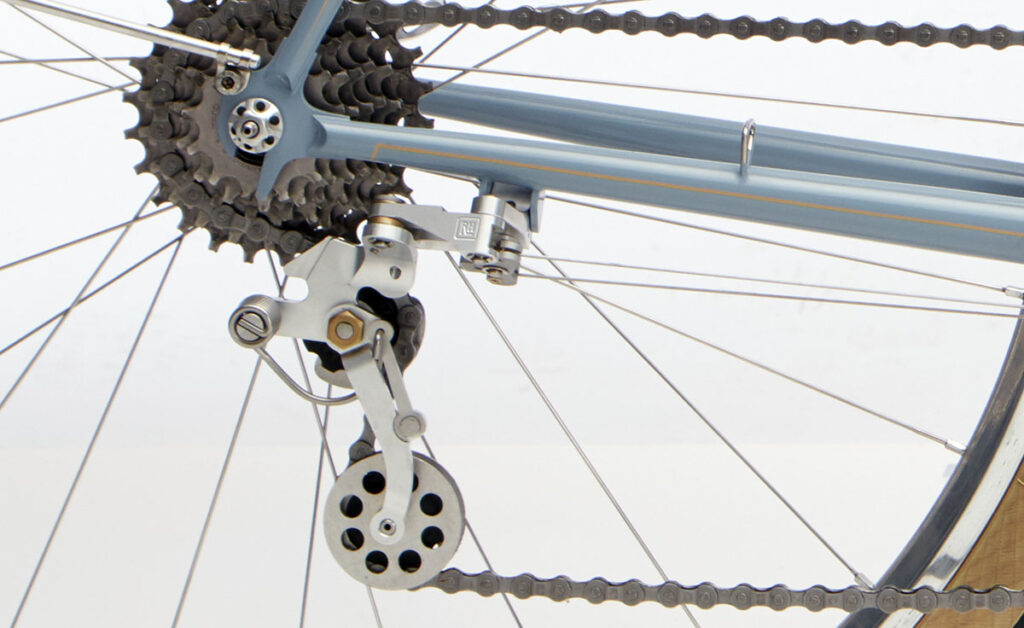
Key for that direct connection is the Nivex’ desmodromic actuation. With cables pulling the derailleur in both directions—upshift and downshift—there is no return spring. That means you get immediate shifts, without any lag. It also means we don’t need to worry about the return spring pulling on the shifter cable at all times, so we can keep the shifting action superlight. The indexing only serves to guide the lever into the right slot, not to hold it there against the return spring.
Just as important is the location where the Nivex is mounted. Tucked under the chainstay, in front of the cassette cogs rather than below, it’s much less vulnerable. If the bike falls over, there’s no hanger that gets bent: The derailleur doesn’t even touch the ground. The pulleys don’t extend as far downward as on conventional derailleurs, so the derailleur is much less likely to hit rocks when riding on rough terrain.
There is no cable housing on the Nivex. The cable runs open from the derailleur to the shifter (and back). That gives you a much more direct shift action. It helps with making the indexing so crisp. It makes the Nivex impervious to mud (as I could confirm in last year’s ultra-muddy Unbound XL.) And, since cable housing is heavy, this also saves significant weight.
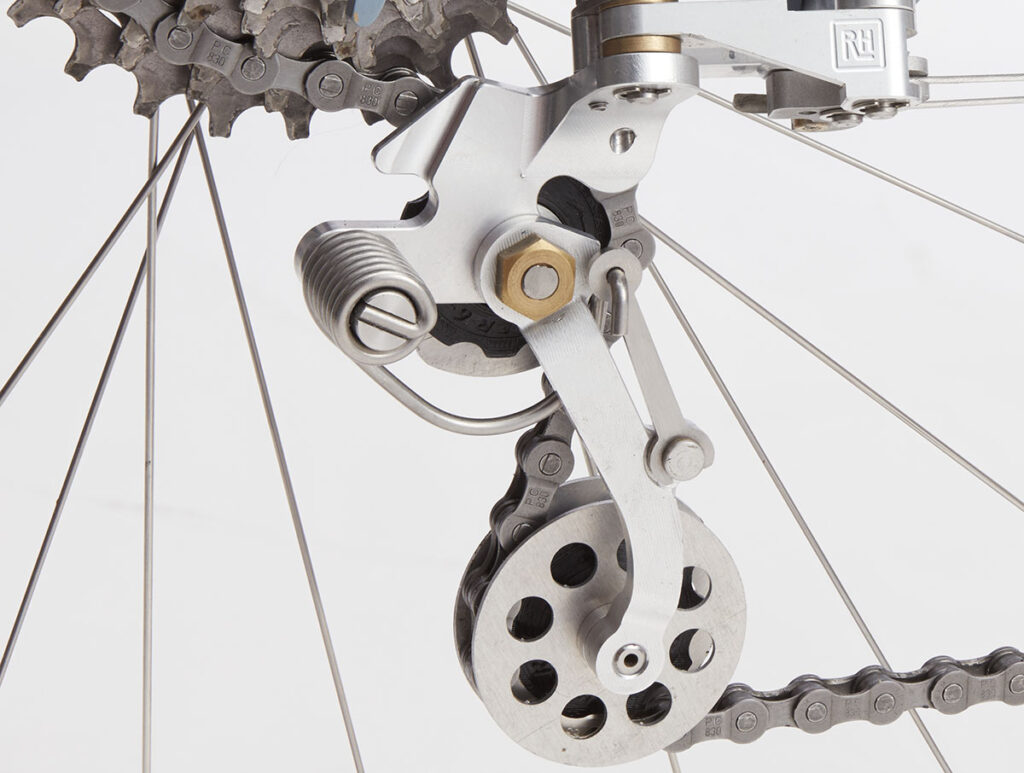
The final part is the clever compensator arm on the chain tensioning spring. It changes the leverage of the spring as the tension arm rotates, and thus keeps the spring tension constant in all gears. That’s really important for consistent shifting—and one reason why the Nivex can rival the best derailleurs from the big three makers. It also reduces chain slap when you ride over rough terrain. I wished for that feature on my XPLR derailleur during the Arkansas High Country Race, when my chain hammered madly against the chainstay during the bumpy descents…
These features also make the Nivex remarkably lightweight. The short-cage Nivex weighs just 186 g, the same as a (mechanical) Campagnolo Super Record that’s made entirely from carbon and aluminum (but uses a conventional design). The shifter weighs just 54 g. And since there is no (heavy) cable housing, the entire system is quite a bit lighter than any other derailleur available today.
Developing a system that’s totally different from what’s out there was a big challenge. Our Nivex had to be compatible with modern drivetrains. (It’s 12-speed compatible.) We want it to shift as well or better than the best electronic drivetrains. And we had promised our customers that we’d only deliver the derailleurs once the design was final. Nobody wants to build a dream bike, only to find out next year that there’s a ‘new and improved’ derailleur that deals with issues that were discovered by early adopters. (Unfortunately, that’s all too common.)
So we sent a few derailleurs to trusted builders to get their input. And we continued our own testing. And then we put our heads together to figure out what could be improved further. Turns out there were a few things. Nothing major—after all, these derailleurs have already been ridden 10,000s of miles—but nonetheless things that could be improved. And so we made new parts, tested them, and then put them into production. All that took a while.
Our new derailleur is inspired by the mid-century Nivex derailleur, but it’s a 100% new design. The only part that is interchangeable is the chain tension spring…
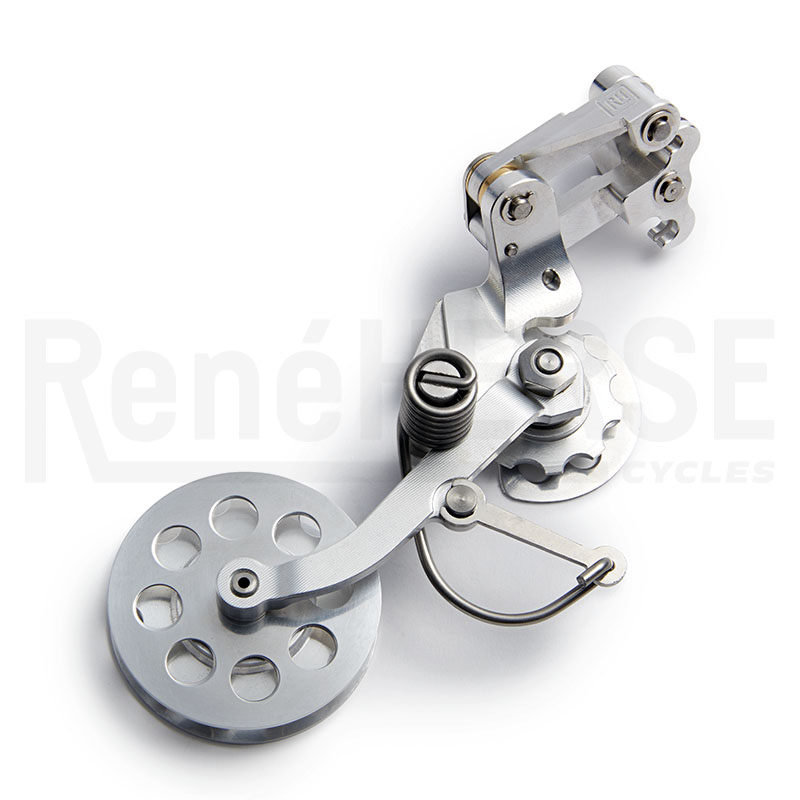
What has changed? The first thing you’ll notice on the long-cage Nivex is the 13-tooth lower derailleur pulley. Have we suddenly started chasing marginal gains with pulleys that are larger than cassette cogs? Not quite. We use a larger pulley because it wraps more chain without an ultra-long tension arms that can hit rocks when you ride in really rough terrain. The Nivex has superior ground clearance, and we don’t want to give up that advantage! (We’re not the only ones thinking about that—just recently Shimano patented a 3-pulley derailleur that achieves similar things to the Nivex. We’re proud that the Nivex isn’t just a patent, but a derailleur you can actually buy.)
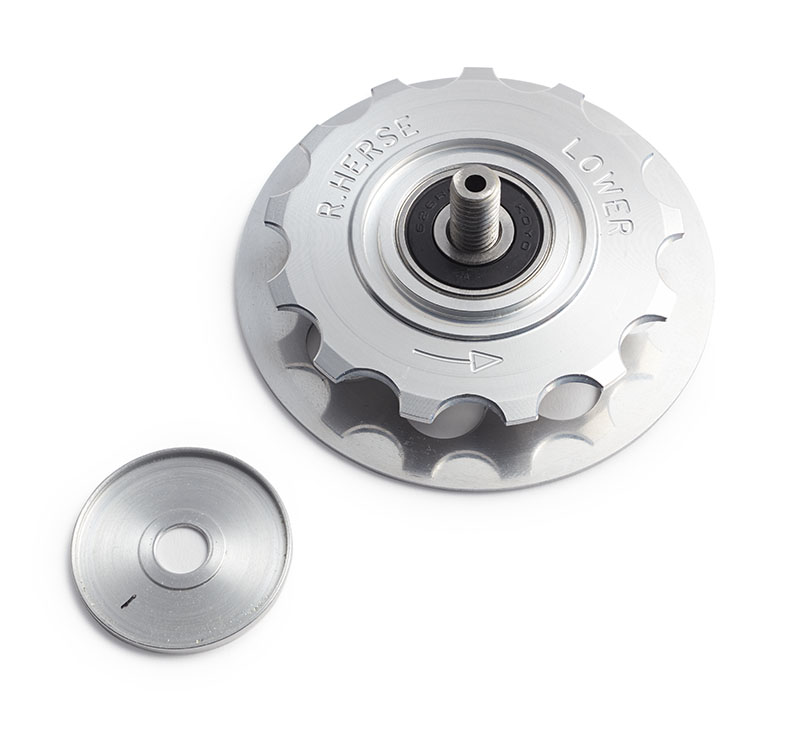
The pulleys themselves are now machined from aluminum. That makes them much more durable. To keep the chain running smoothly and quietly even at extreme chain angles—such as the big-big combo that I often use to get over the top of a hill without a front shift—the teeth of the lower pulley have sophisticated 3D machining (on the other side, not visible here). Ball bearings ensure smooth rolling and low resistance. A labyrinth seal protects bearings of the lower pulley—which sees the most spray. (At the top, there is no room for a labyrinth seal; fortunately it’s not needed.) The pulleys are special to the Nivex. We’re offering spares, but we don’t plan to sell any. The aluminum pulleys are designed to last almost forever. The bearings are standard (Type 626)—you can find in any bearing supply shop. They are easy to replace.
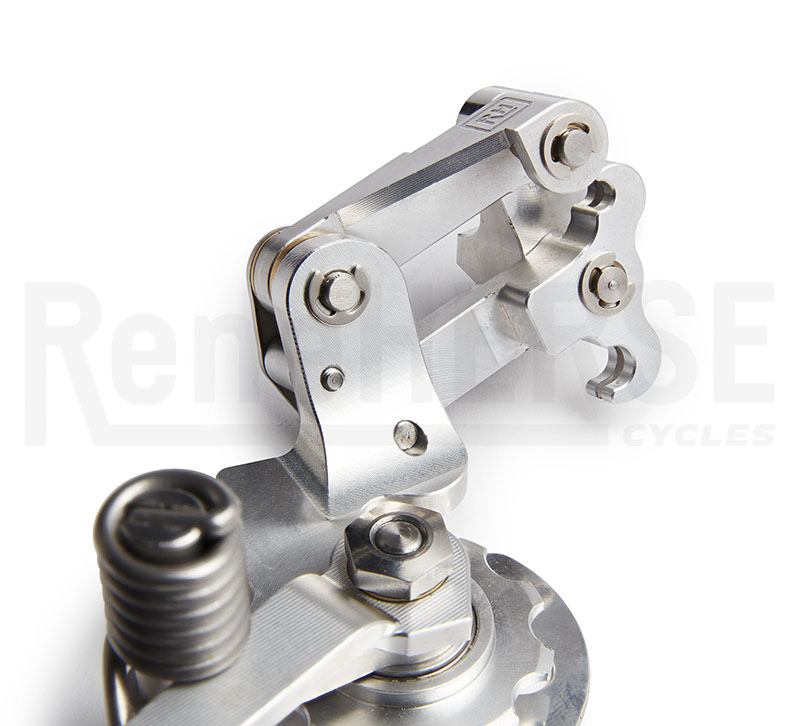
There are a few other changes to improve longevity even more—some of our test samples have now been ridden for 50,000 miles and more. We’ve added brass washers to ensure smooth operation even when the derailleur is dirty. The derailleur is fully rebuildable, and we are offering all spare parts. (It’s of little use if you can take apart your derailleur, but can’t get spares!)
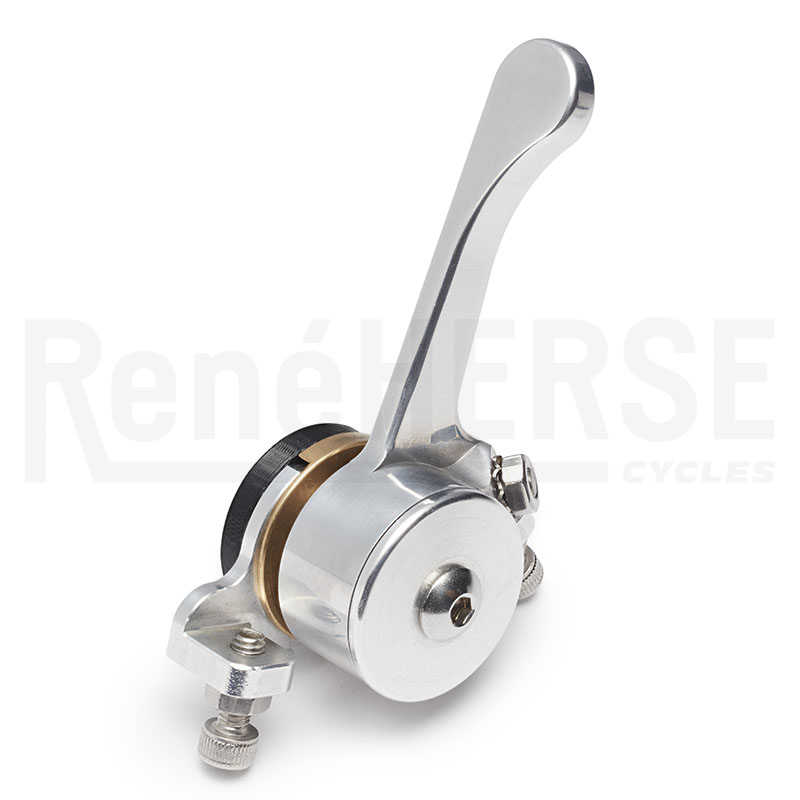
With the derailleur comes a special shifter. Desmodromic operation means that there are two cables, one for up- and one for downshifts. Actually, it’s one cable that runs around the shifter and back to the derailleur. Since there is no return spring that constantly pulls on the shift lever, we don’t need very strong indexing. The indexing on the Nivex shift lever guides the lever—a bit like the gate of a manual transmission in a car—but it doesn’t have the ‘over-center’ action that makes most indexed downtube shift levers a bit harsh to use. The Nivex shifter is currently available for 11-speed Shimano cassettes. Other versions are in preparation, but we feel that the 11-speed is currently the best option. The derailleur is 12-speed compatible, but 11-speed has a bit more leeway in adjusting the indexing, so it’s more reliable in the long run—while providing plenty of gears.
We also offer a friction lever, with adjustable friction. You can run it superlight, as I did for Paris-Brest-Paris this year. Or you can add a washer to get a little more friction. It comes down to personal taste, and it’s easy to change. Friction shifting is recommended only up to 8-speed—with more cogs, the steps between gears are just too small. Frame flex under hard acceleration can lead to unwanted shifts if the derailleur is not perfectly centered on the cassette cog.
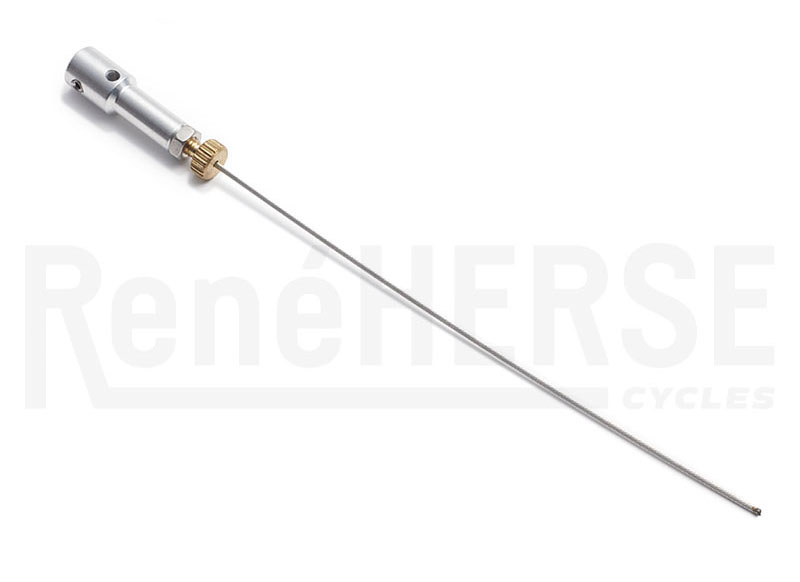
To help with dialing in the cable tension and adjust the indexing, we’ve developed a tension adjuster for the shifter cable. This makes setup a snap. And once you’ve set up the Nivex, you’ll never have to do it again. You can even take the derailleur off the bike without losing the indexing adjustments: Simply unscrew the derailleur, unhook the cable ends, and you can pack the derailleur separately from your bike when you’re traveling.
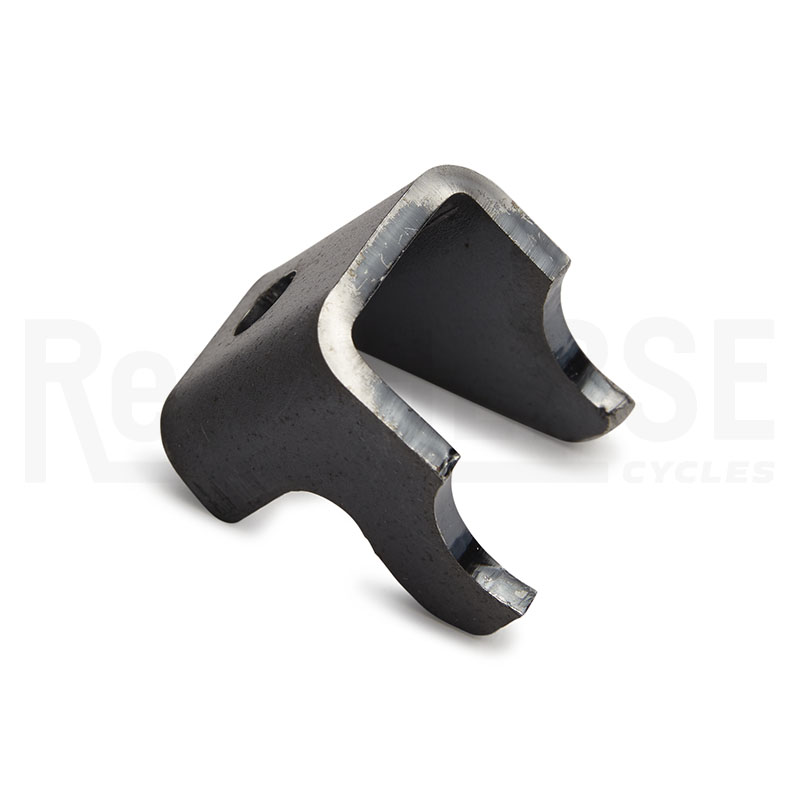
Since the Nivex is mounted on the chainstay, there is also a new derailleur mount. (The instructions for the Nivex include specs for builders who want to make a Nivex mount from titanium.)
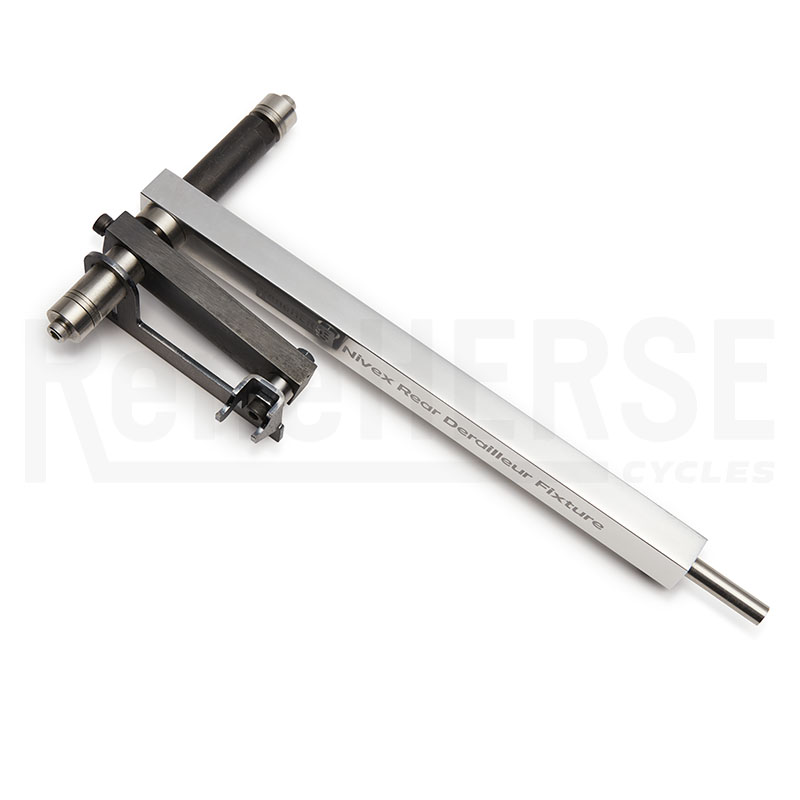
A braze-on jig makes the process of locating and aligning the mount correctly virtually fool-proof, so that optimum shifting is guaranteed. The derailleur mount only needs to be aligned once, before it’s brazed on. Unlike conventional derailleur hangers, it can’t get bent as you use the bike.
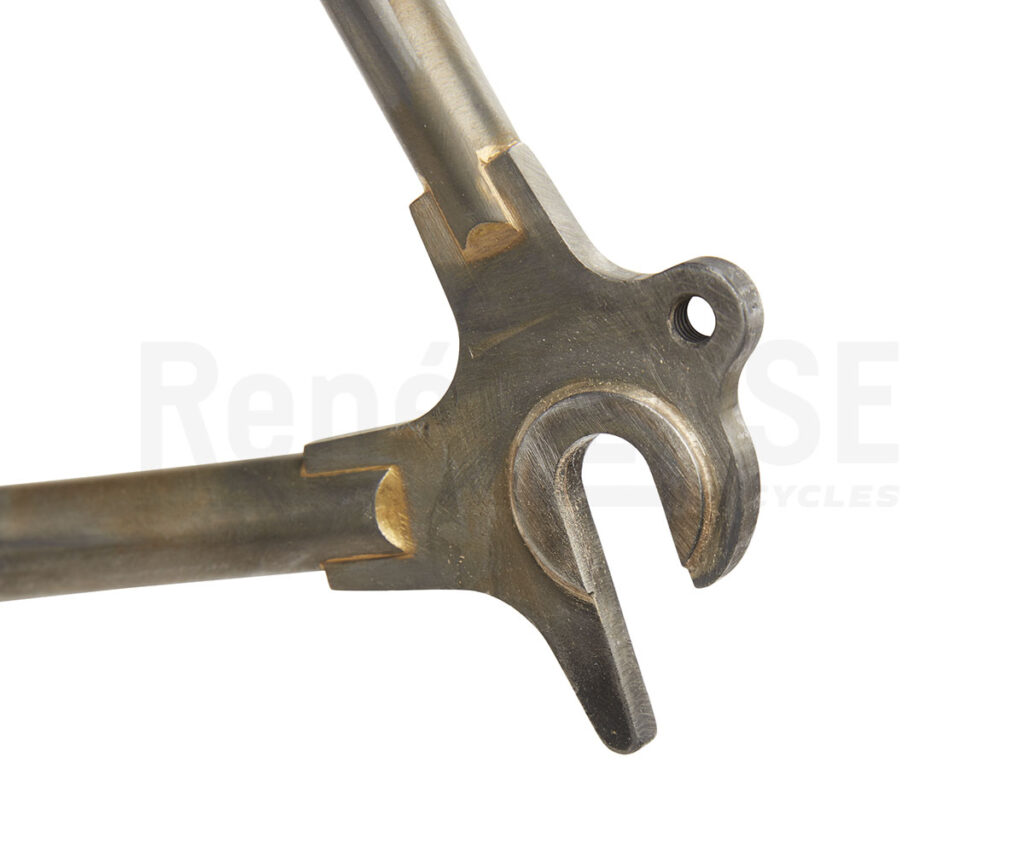
And since the derailleur is in front of the rear axle, rather than below, we can run dropouts that open slightly to the rear. That holds the wheel more secure, and it makes it easier to remove the wheel on bikes with fenders. On the inside of the dropout, a stainless washer is brazed on, so the paint won’t get abraded by the wheel going in and out of the frame.
However, I’m the first to admit that wheel removal is not a strong point of the Nivex. The chain surrounds the cassette on three sides, so you first take the chain off the cog by hand. It’s not difficult, but you’ll get dirty fingers. The classic mid-century Nivex came with a nifty chainrest, but that requires a special cassette, and we didn’t want to make a derailleur that works only with a custom cassette. (The Rene Herse Nivex is designed for Shimano Ultegra 12-30 cassettes.) Fortunately, wide tires have made flats a rare occurrence—in two Oregon Outbacks, two Paris-Brest-Paris, one Unbound XL, and many thousands of miles here in the Cascades, I’ve not yet had to remove the rear wheel on the road.
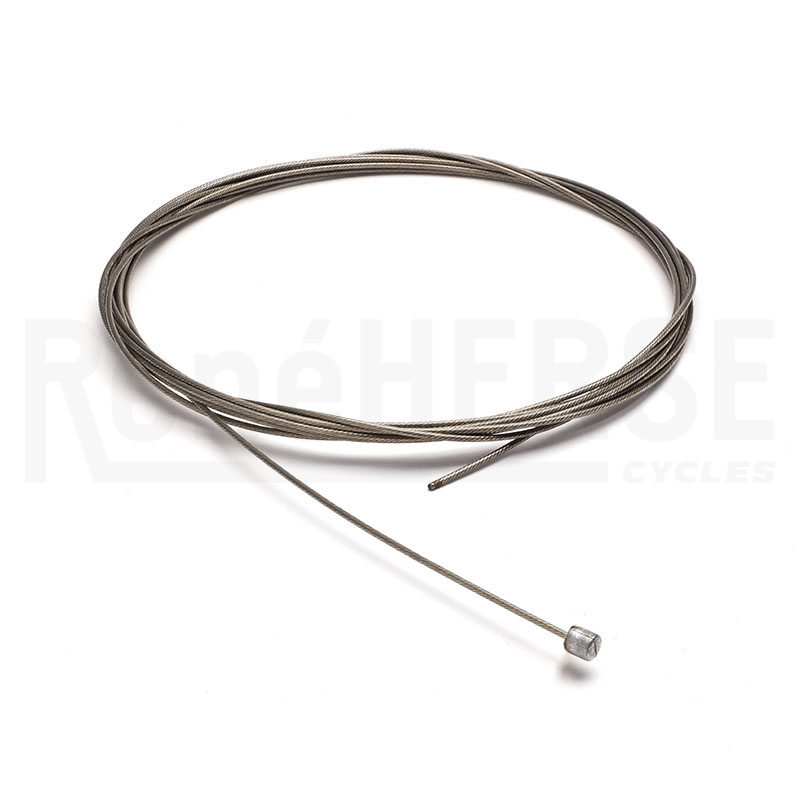
Speaking of standard parts, the Nivex uses a standard extra-long shifter cable—the same as on a tandem. We stock them, of course, but you’ll also find them in many bike shops. Not that you’re likely to need one, because the light action (remember, no return spring) puts much less load on the cable than other derailleurs. And we’ve designed the shift lever and derailleur without tight bends that stress the cable.
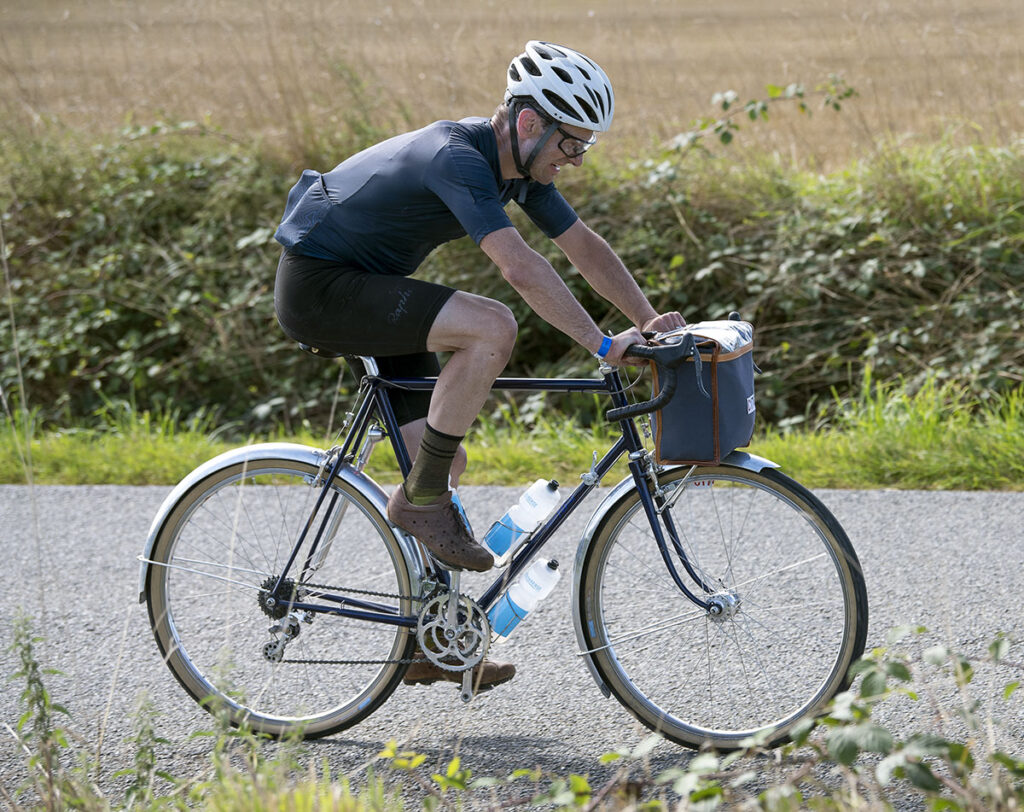
One priority when designing the Nivex was to make sure you can keep it running almost indefinitely, even if you can’t get parts from Rene Herse Cycles. The parts are either designed so they don’t wear out, or they are standard parts (shifter cable, pulley bearings) that will be available forever from many sources.
All Nivex parts are in stock now. Quantities are limited. Each derailleur is blueprinted during assembly—all dimensions are checked and every part is fitted to the others to make sure each derailleur is perfect. That takes time. If an item is sold out, don’t worry. More will be on the way soon.
The Rene Herse Nivex is not for everybody. But if you’re looking for an analog alternative to modern drivetrains, but don’t want to give up performance, you’ll like the Nivex.
Further Reading:


